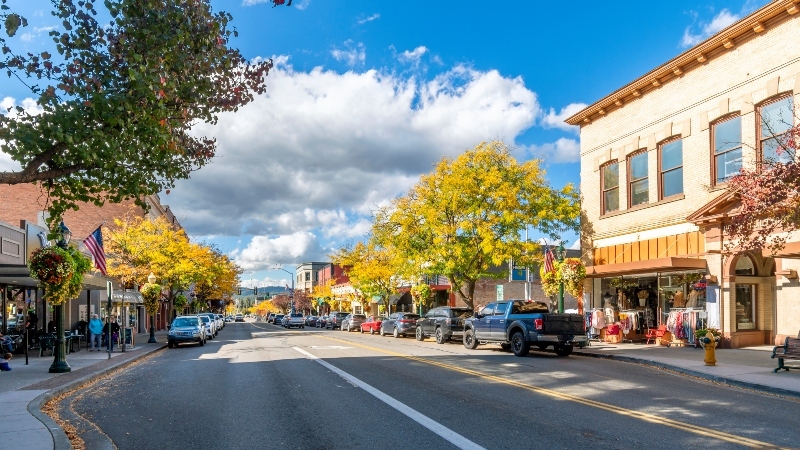Making the Switch: Vendor Transition Guide
Switching fire and security vendors feels risky. Even if your current provider isn't meeting your needs, the thought of transitioning systems and...
 |
Fire protection professionals committed to safeguarding lives, property, and peace of mind. |
 |
Solutions designed for your property type, from multi-family housing to healthcare facilities to retail spaces. |

|
Fire alarm, area of refuge, camera, and card access monitoring services. |
 |
Clear communication and instant response when every second counts. |
 |
From kitchens to server rooms, the right protection for every space. |
 |
Keep your primary defense system ready and reliable. |

|
Manage all your properties' access from one simple platform. |
 |
Monitor multiple properties in real time from anywhere, at any time. |

|
Document upcoming maintenance appointments and improve your proactive budget planning. |
 |
Fire Extinguisher Maintenance Checklist Learn the requirements for testing extinguishers monthly, annually, and beyond. |

|
Track all your inspection deadlines in one place. |
 |
Kitchen Hood Inspection Checklist Ensure your kitchen hoods are safe and compliant. Download a complete list of testing requirements. |

|
Guide to Fire & Security Monitoring Your complete property protection handbook in practical terms. |

|
Running a food truck takes work—this guide gives you the tools to keep it safe and up to code. |
 |
Comprehensive Guide to NFPA 13 and NFPA 25 Fire Sprinkler Systems Navigate sprinkler system requirements with confidence using our straightforward guide to codes and maintenance. |

|
Get your essential compliance guide. |
 |
When reliability matters across 18 restaurants, micromanagement doesn't. |
3 min read
Stephen Cieslukowski, President : June 01, 2018
There is often a fine line between fact and fiction, and that line can also be blurred when it comes to our perceptions of sprinkler systems. It’s a century-old fact that sprinklers are highly effective elements of total system designs for fire protection in buildings and safety of life. When they are present, the chances of dying in a fire are reduced 50 to 75 percent, and the average property loss per fire is cut 50 to 65 percent.
Yet there are still common misunderstandings about sprinkler operation and effectiveness. Let’s test your sprinkler system IQ with a little True or False test. Check your answers at the end of the test. I hope you score 100 percent!
TRUE OR FALSE
1. Water damage from a sprinkler system is more extensive than fire damage.
This is a myth, and here’s why. Water damage from a building sprinkler system will be much less severe than the damage caused by water from fire-fighting hose lines, or smoke and fire damage if the fire is allowed to spread. Quick response sprinklers release 8-24 gallons of water per minute compared to 80-125 gallons per minute discharged by high-pressure fire hoses. That’s a huge difference!
2. When a fire occurs, not every sprinkler head goes off.
That’s a fact. Sprinkler heads are individually activated by fire temperatures in excess of 155 degrees or greater. Ninety percent of all fires are controlled with six or fewer heads. A study conducted during 80 years of automatic sprinkler use found that 82 percent of the fires that occurred were controlled by two or fewer sprinkler heads. Impressive, right? By the way, residential fires are usually controlled with just one sprinkler head.
3. Sprinklers Destroy Property
False, false and false! This myth follows the assumption that if one sprinkler operates in a fire, all sprinklers will “go off” and deliver vast quantities of water, inundating the building and destroying its contents. This myth is especially popular among managers of computer centers, telecommunications facilities, art galleries, museums, libraries and historic buildings. Fortunately, there’s growing acceptance by the arts and historic preservation communities of the notion “better wet than burned.” While there’s minimal chance of water damage to a building’s contents from sprinklers, that risk is preferable to significant or total loss of the building or of a collection, as happened with Windsor Castle, the Los Angeles Library, the San Diego Space Museum, and the Venice Opera House. The rebuilding of several of these buildings without sprinklers, however, suggests that myth about sprinklers is still alive and kicking.
4. A smoke detector does not provide enough protection.
You should have gotten this one right—it’s definitely true. Smoke detectors save lives by providing an early warning to a smoke or fire incident. But, they can do nothing to extinguish a growing fire or protect those physically unable to escape on their own, such as the elderly, the disabled or small children. Too often, battery-operated smoke detectors fail to function because the batteries are dead or have been removed. The number of fire deaths in homes did not significantly decrease even though the percent of homes in America that were “protected” with smoke detectors increased from zero to over 70 percent,
5. Sprinklers may go off accidentally, or not at all in a fire
Wrong! Inadvertent discharge of sprinkler heads is extremely small (1 in 2.5 million) and the failure to discharge in a fire is even smaller (1 in 16 million). The rare system failures are usually attributed to human error, mechanical damage or poor design. Proper selection and location of sprinkler heads, and proper system design minimizes the possibility of inadvertent discharge. To ensure reliability and performance, sprinkler system components, design and installation are meticulously controlled by the National Fire Protection Association standard.
6. Sprinklers are designed to protect property, but are not effective for life safety.
The second half of the sentence is just plain false. It’s very true that sprinklers protect property. In fact, property losses are 85 percent less in residences with fire sprinklers compared to those without sprinklers. But sprinkler systems also provide a high level of life safety. Statistics reveal that there has never been any multiple loss of life in a fully sprinklered building. The combination of automatic sprinklers and early warning systems in all buildings could reduce overall injuries, loss of life and property damage by at least 50 percent.
How many did you get right? Kudos if you scored 100.
Seriously, my goal of this brief test is that you and your staff knows the facts and fiction of fire safety so everyone is prepared in the event of a fire. After all, Brothers Fire & Security is committed to supporting clients and providing ongoing education so your property is protected and people are safe.
As one of the premier providers of fire and security solutions in the Upper Midwest, Brothers Fire & Security strives to build long-term, value-added relationships. We work with business owners and property management companies, as well as all types of public institutions to solve fire and security needs. By taking advantage of our integrated bundled services, many of our clients find that they can save 25-30% on their safety services, annual inspections and more. From a single location to franchises throughout the region and the country, our integrated approach saves our clients valuable time, money and stress. We provide fire protection systems, security systems, fire sprinkler systems, fire alarm systems, 24-7 monitoring, fire extinguishers, card access and kitchen hoods.

Switching fire and security vendors feels risky. Even if your current provider isn't meeting your needs, the thought of transitioning systems and...

Your fire alarm shows a trouble signal. Last week's sprinkler inspection never happened, and despite three calls and multiple messages, your vendor...

Winter weather and holiday demands can make managing multi-location security a nightmare. Fall is your best window to upgrade security systems,...